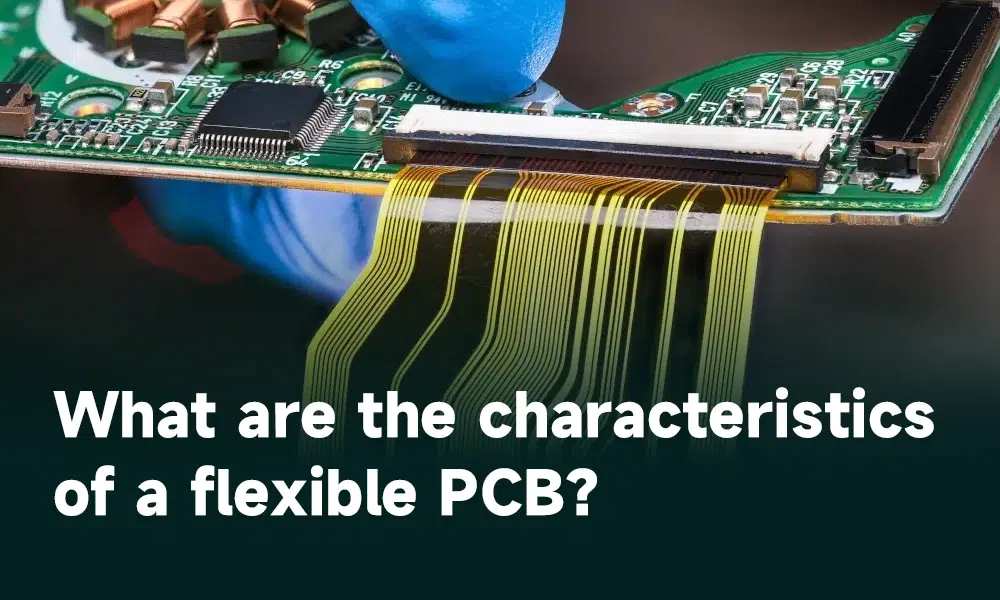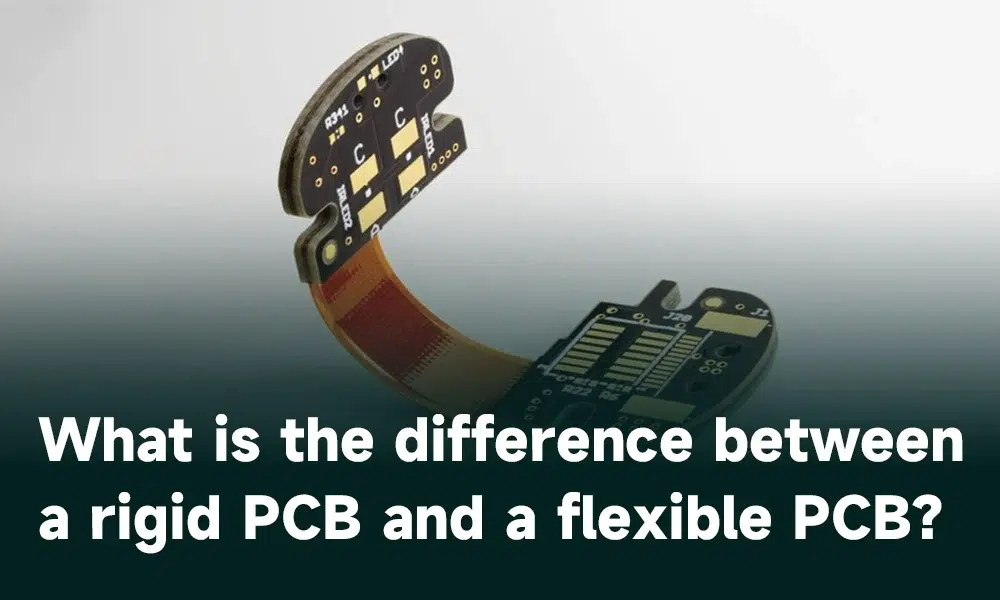In the realm of modern electronics, the evolution of Printed Circuit Boards (PCBs) has been revolutionary. Among these advancements, the emergence of Flexible PCB has carved a niche, driving innovation in various industries. Akin to their name, these PCBs offer a pliable alternative to traditional rigid boards, opening doors to unparalleled design flexibility and applications.
What is a flexible PCB?
A flexible PCB, also known as a flex PCB or flexible circuit, is a type of printed circuit board designed using flexible and bendable materials, allowing it to conform to various shapes, contours, and three-dimensional configurations. Unlike rigid PCBs that maintain a fixed form, flexible PCBs offer a high degree of flexibility, enabling them to bend, fold, or twist to accommodate complex layouts or designs.
These boards are composed of flexible substrate materials, such as polyimide (often referred to by the brand name Kapton) or polyester, that provide the board with its flexibility while maintaining electrical conductivity. Copper traces or conductive layers are etched onto these flexible substrates to create the conductive pathways required for electrical connectivity between components.
What are the types of flexible PCB?
Single-sided Flex PCBs: These have conductive material on one side and are the simplest type. They bend in one direction and are used in applications requiring minimal flexibility.
Double-sided Flex PCBs: These boards have conductive material on both sides, offering increased flexibility and allowing more complex designs.
Multilayer Flex PCBs: These boards consist of multiple layers of conductive material separated by insulating layers. They provide enhanced flexibility and support complex circuitry.
Rigid-Flex PCBs: These combine both rigid and flexible substrates in one board. Rigid areas provide support for components while flexible sections enable bending. They’re suitable for applications needing both flexibility and structural support.

What are the characteristics of a flexible PCB?
Flexible PCBs possess distinct characteristics that set them apart from traditional rigid boards. Some key characteristics include:
Flexibility: The primary and defining characteristic of flexible PCB is their ability to bend, fold, or twist without compromising functionality. This flexibility allows them to conform to non-planar or irregular shapes, making them ideal for applications requiring adaptability.
Thin and Lightweight: Flex PCBs are thinner and lighter compared to rigid boards. This characteristic contributes to space and weight savings in electronic devices, especially in applications where size and weight constraints are critical.
Durability: Despite their flexibility, these boards are durable and can withstand repeated flexing or bending without mechanical failure. They are designed to resist damage from vibrations, shocks, or bending, ensuring reliability in dynamic environments.
Space Efficiency: The flexibility of these boards allows for compact and space-efficient designs, enabling them to fit into small or oddly shaped spaces that rigid PCBs cannot accommodate.
High Density and Complexity: flexible PCB can support high-density layouts with complex designs. They can incorporate multiple layers of flexible substrates and conductive traces, facilitating intricate circuitry and component placement.
Temperature Resistance: Flexible PCB materials often exhibit good thermal stability and resistance to temperature variations, ensuring operational reliability in varying environmental conditions.
Chemical and Moisture Resistance: Many flexible substrate materials used in flexible PCB offer resistance to chemicals and moisture, enhancing their durability and reliability in harsh operating conditions.
These characteristics collectively make flexible PCB suitable for diverse applications across industries where adaptability, space optimization, and reliability are crucial design considerations.
Where are flexible PCBs used?
Flexible PCBs find applications across various industries and sectors due to their unique characteristics and flexibility in design. Some common areas where flexible PCBs are extensively used include:
Consumer Electronics: In smartphones, tablets, laptops, and wearables, where space optimization and flexibility are crucial for compact and innovative designs.
Automotive Industry: In automotive systems, including instrument panels, sensors, lighting, and entertainment systems, where flexibility, vibration resistance, and space-saving attributes are valuable.
Aerospace and Aviation: In aircraft systems, satellites, and space exploration equipment, where lightweight, compact designs, and the ability to withstand extreme conditions are essential.
Medical Devices: In medical equipment such as pacemakers, defibrillators, diagnostic tools, and wearable health monitoring devices, where flexibility, reliability, and compactness are vital for patient comfort and functionality.
Industrial Applications: In robotics, automation systems, sensors, and control modules, where flexible PCBs can adapt to complex configurations and harsh operating environments.
Military and Defense: In military-grade electronics, including communication systems, radar equipment, and military vehicles, where ruggedness, reliability, and space-saving designs are critical.
Wearable Technology: In smart clothing, fitness trackers, and other wearable devices, where flexibility and conformability to the human body are essential for comfort and usability.
IoT Devices: In various Internet of Things (IoT) applications, including smart home devices, sensors, and connected devices, where compact and adaptable designs are advantageous.
Flexible Displays: For flexible and curved display screens used in smartphones, televisions, and other electronic devices, where bendable and lightweight designs are sought after.

What is the difference between a rigid PCB and a flexible PCB?
Structure and Material:
Rigid PCB: Made from solid and inflexible materials like fiberglass (FR4) with a copper layer etched onto the surface. These boards cannot bend or flex without risking damage.
Flexible PCB: Composed of flexible substrates such as polyimide or polyester. These materials allow the PCB to bend, fold, or twist without impairing functionality, thanks to their pliable nature.
Design Flexibility:
Rigid PCB: Have design limitations in terms of shape and adaptability to non-planar or irregular spaces. They maintain a fixed shape.
Flexible PCB: Offer unparalleled design flexibility, conforming to complex layouts or shapes where rigid boards cannot fit. They can adapt to three-dimensional configurations.
Applications:
Rigid PCB: Typically used in standard electronic devices where components are mounted onto a solid surface. They are prevalent in devices like computers, TVs, and traditional electronics.
Flexible PCB: Widely employed in industries demanding flexibility, space optimization, and reliability in dynamic environments. Common applications include aerospace, automotive, wearables, medical devices, etc.
Durability and Reliability:
Rigid PCB: More susceptible to damage in dynamic or vibrating environments due to their rigid nature.
Flexible PCB: Designed to withstand continuous flexing, making them more durable in dynamic or vibrating conditions. They offer superior reliability in applications requiring constant movement or adaptation.
Space Utilization:
Rigid PCB: Often have standard shapes and sizes, limiting their adaptability to space-constrained or irregularly shaped areas.
Flexible PCB: Ideal for applications requiring space optimization or non-planar designs. Their adaptability allows them to fit into spaces where rigid boards cannot.
Both rigid and flexible PCB have distinct advantages and are chosen based on the specific needs of the application. Rigid boards are suitable for standard electronic devices, while flexible PCBs excel in applications demanding adaptability, compactness, and reliability in challenging environments.
What material is flexible PCB?
Flexible PCBs are typically made of flexible substrate materials that allow the board to bend or flex without losing functionality. The primary materials used in flexible PCB construction include:
Polyimide (PI): Commonly known by the trade name Kapton, polyimide is a popular choice for flexible PCBs. It offers excellent thermal stability, high temperature resistance, and good mechanical strength, making it suitable for various applications.
Polyester (PET): Polyester is another flexible substrate material used in flex PCBs. It offers good flexibility, durability, and cost-effectiveness. However, compared to polyimide, it might have lower thermal resistance.
These flexible substrate materials serve as the base for the PCB, providing the necessary flexibility while also offering electrical insulation and mechanical support. Copper traces or conductive layers are etched onto these flexible substrates to create the conductive pathways required for electrical connectivity between components.
Apart from the substrate material, flexible PCB might also include additional layers such as adhesive layers, coverlays (protective layers), and stiffeners in specific areas to enhance mechanical strength, protect traces, or add rigidity to certain sections of the board as needed for the application.

How to design a flex PCB ?
Designing a flexible PCB involves considerations specific to flexible materials and the intended application’s requirements. Here’s a step-by-step guide to designing a flexible PCB:
1. Understand Application Requirements:
Application Analysis: Understand the purpose, environment, and flexibility needs of the PCB in the intended application.
2. Choose Flexible Substrate Material:
Material Selection: Select appropriate flexible substrate material like polyimide (PI) or polyester (PET) based on flexibility, thermal stability, and application demands.
3. Design Considerations:
Bend Radius and Flexibility: Determine the permissible bend radius and areas where flexibility is necessary without damaging traces or components.
Layer Stacking and Orientation: Plan the layers’ arrangement to accommodate bending or flexing without causing stress on critical components or traces.
4. Component Placement:
Component Selection: Choose components suited for flexible PCB in terms of flexibility and durability.
Placement Strategy: Strategically position components to withstand intended bending or flexing without damage or disconnection.
5. Routing and Traces:
Trace Design: Create traces capable of accommodating bending or flexing without breaking, using appropriate widths and shapes to minimize stress.
Corner Radius: Utilize rounded traces or proper corner radius to prevent weakening or breaking traces.
6. Coverlay and Solder Mask:
Coverlay Integration: Integrate coverlay in areas requiring protection or insulation without hindering flexibility.
Solder Mask Design: Design solder mask to define areas for component soldering without restricting the board’s flexibility.
7. Via Placement and Design:
Via Types and Locations: Employ blind or buried vias to interconnect different layers while allowing flexibility.
8. Simulation and Validation:
Simulation Tools: Utilize software tools to simulate the board’s flex behavior and identify stress points.
Prototyping: Create prototypes for real-world testing to ensure the design functions as intended under bending or flexing conditions.
9. Design for Manufacturing (DFM):
Design Review: Perform a comprehensive design review considering manufacturing capabilities and limitations of flexible materials and processes.
10. Collaboration with PCB Manufacturer:
Collaboration: Work closely with the PCB manufacturer, providing clear specifications and requirements for fabricating the flexible PCB.
Top 10 flexible circuit board manufacturers in the world
Flex: A global leader in design, manufacturing, and assembly of flexible circuits and related components, catering to various industries, including automotive, healthcare, and consumer electronics.
Website: https://flex.com/
TTM Technologies: Known for its broad range of PCB solutions, TTM Technologies also specializes in flex and rigid-flex PCBs for diverse applications, including aerospace, defense, and medical devices.
Website:https://www.ttm.com/
Sumitomo Electric Industries: Offers a range of flexible circuit solutions for applications in automotive, consumer electronics, and telecommunications, renowned for its high-quality and innovative products.
Website:https://sumitomoelectric.com/
NewFlex Technology: Specializes in flexible circuitry, offering expertise in designing and manufacturing flexible PCBs for applications like wearables, medical devices, and automotive electronics.
Website:https://newflexceo.tradekorea.com/main.do
Multek (A Flex Company): Provides a wide array of flexible and rigid-flex circuit solutions for industries such as automotive, industrial, and consumer electronics.
Website:https://www.multek.com/
Rigid-Flex Technology: Known for its expertise in rigid-flex PCBs, providing solutions for applications where a combination of rigid and flexible boards is required, like in aerospace and military systems.
Website:https://www.rigiflex.com/
Career Technology (Mfg.) Co., Ltd.: Offers a range of PCB solutions, including flex and rigid-flex circuits, catering to various industries such as telecommunications, automotive, and medical.
Website: https://www.nexty-ele.com/english/product/detail/career-technology-mfg-co-ltd/
Zhen Ding Technology: Known for its innovative and reliable flexible circuit board solutions, serving industries like mobile devices, wearables, and automotive electronics.
Website:https://www.zdtco.com/en
Fujikura Ltd.: Provides flexible circuit solutions for various applications, with a focus on high-quality and high-reliability products for automotive and consumer electronics.
Website:https://www.fujikura.co.jp/eng/
KingSong PCB Technology: Specializes in flexible PCBs and rigid-flex PCBs, offering solutions for industries like telecommunications, medical devices, and aerospace.
Website:https://www.king-pcb.com/
Conclusion
The advent of flexible PCB has revolutionized the electronics industry, offering unparalleled design possibilities and functionality. As technology progresses, their adaptability and versatility continue to fuel innovation, paving the way for groundbreaking applications across diverse sectors. Flex PCBs stand as a testament to the ever-evolving landscape of electronics, promising a future where flexibility knows no bounds.










